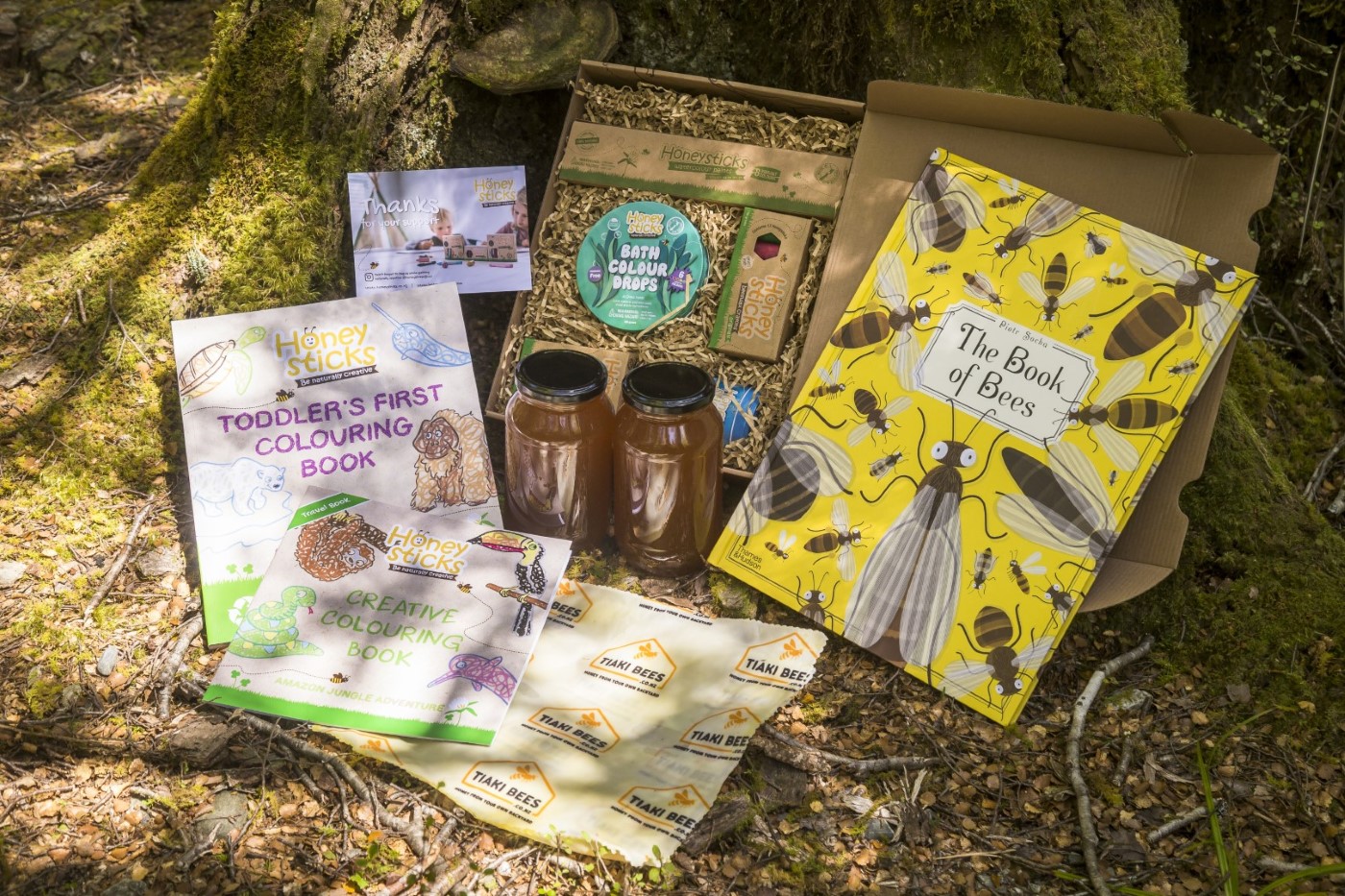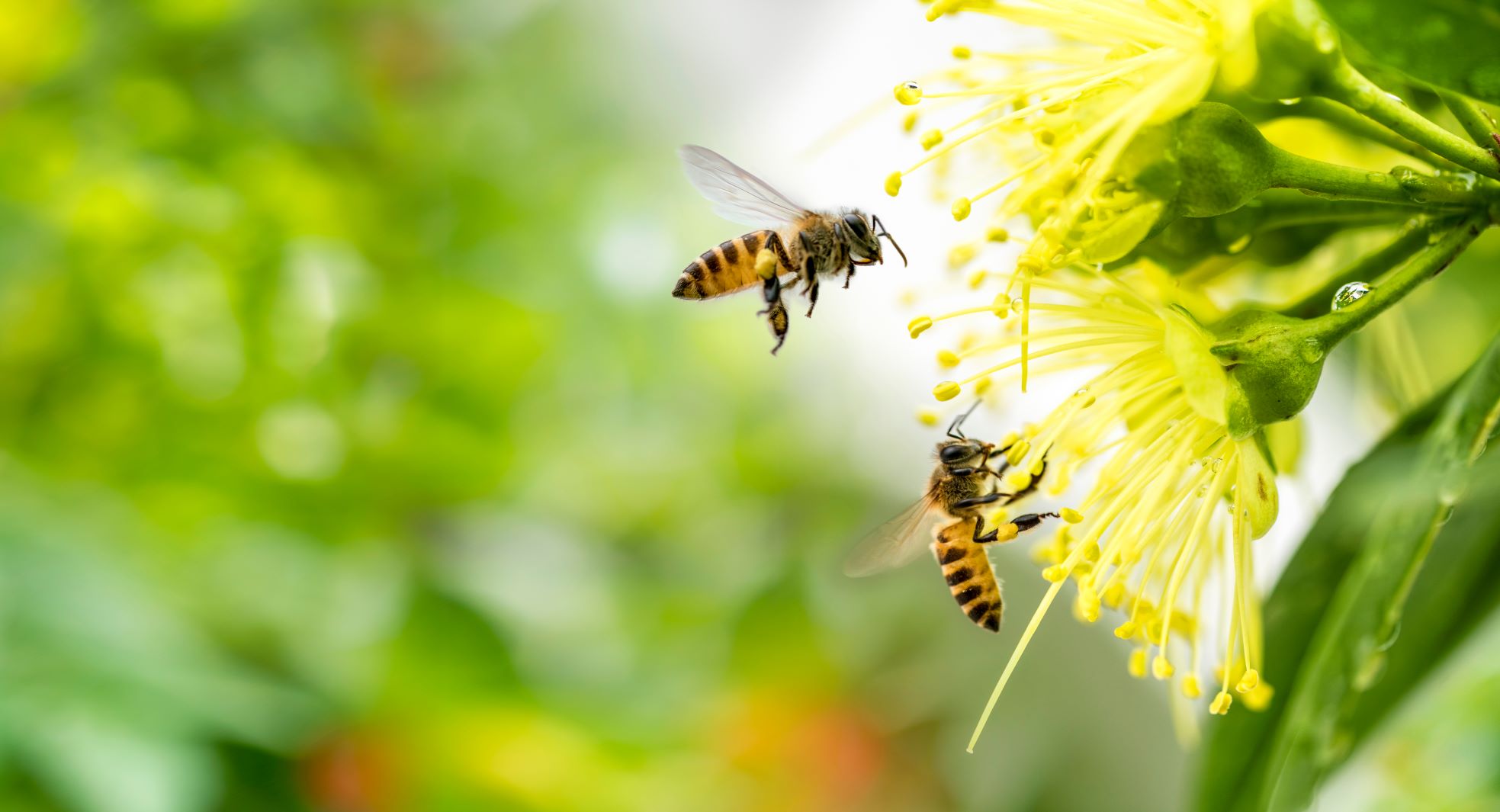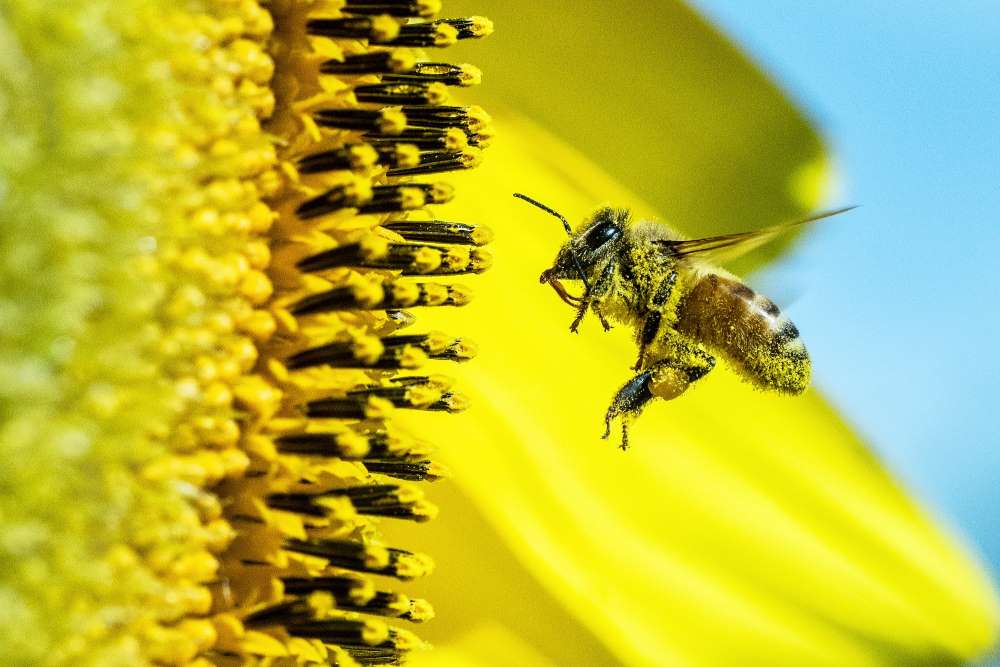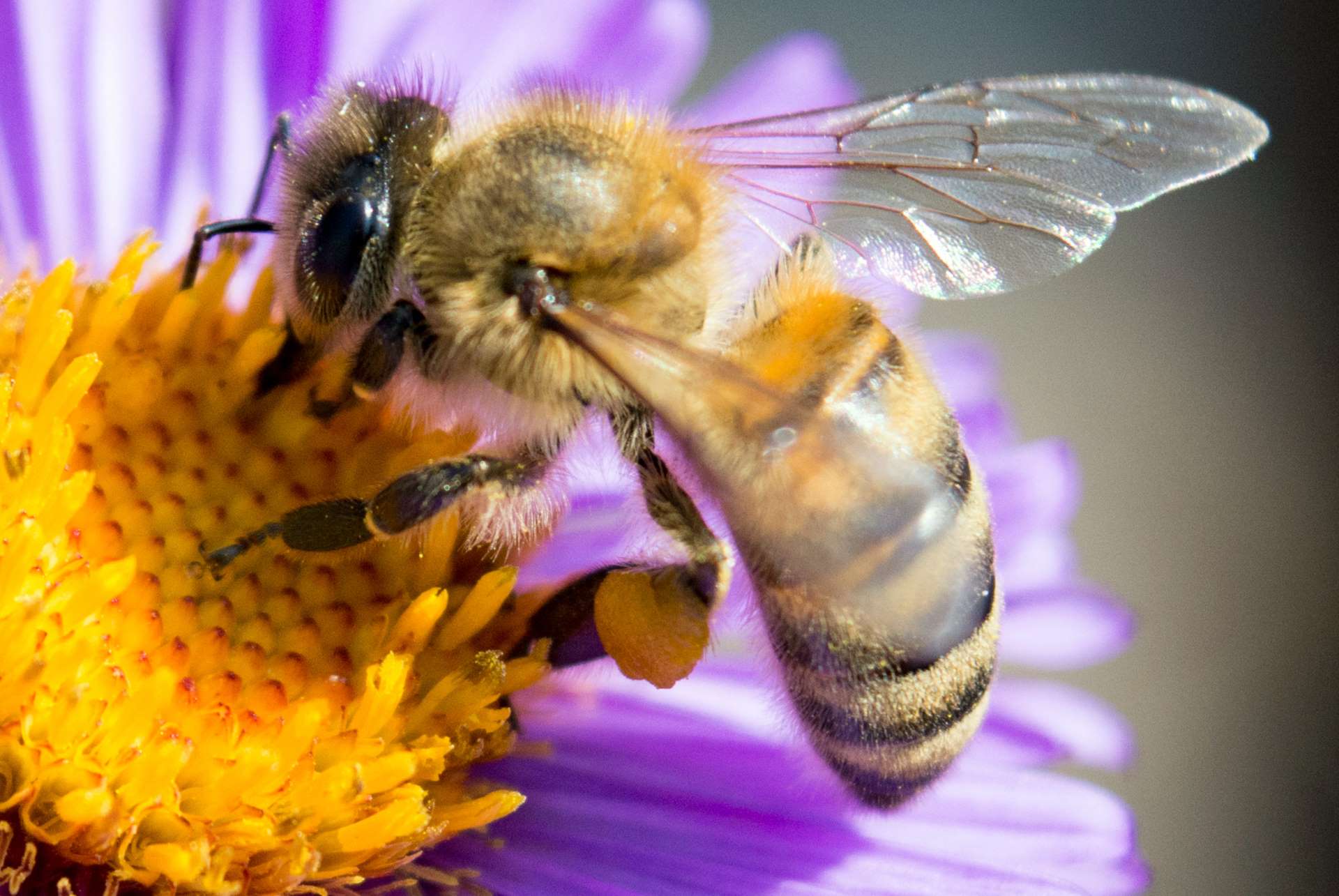Summer is here and the nectar is flowing.
December 2022
The silly season is upon us and while everybody guns towards a well-deserved summer break, the bees are just getting busy. The days are long and the flowers are blooming, there’s nectar to be found and, of course, honey to be made. And when the bees are busy, so are we here at Tiaki Bees.
As we spoke about in our spring update, the last few months have been a time for monitoring and replacing queen bees (requeening) where needed. We even built a bunch of A-frame roofs to keep the hives and their queens protected. At the moment, we’re doing the final checks to make sure all our queens, both existing and fresh, are happy and ready for the busy season ahead. They’ve got a big job to do, after all. At this time of year, the queen is in full production, laying between 1500 – 2000 eggs a day – that’s more than her own body weight.
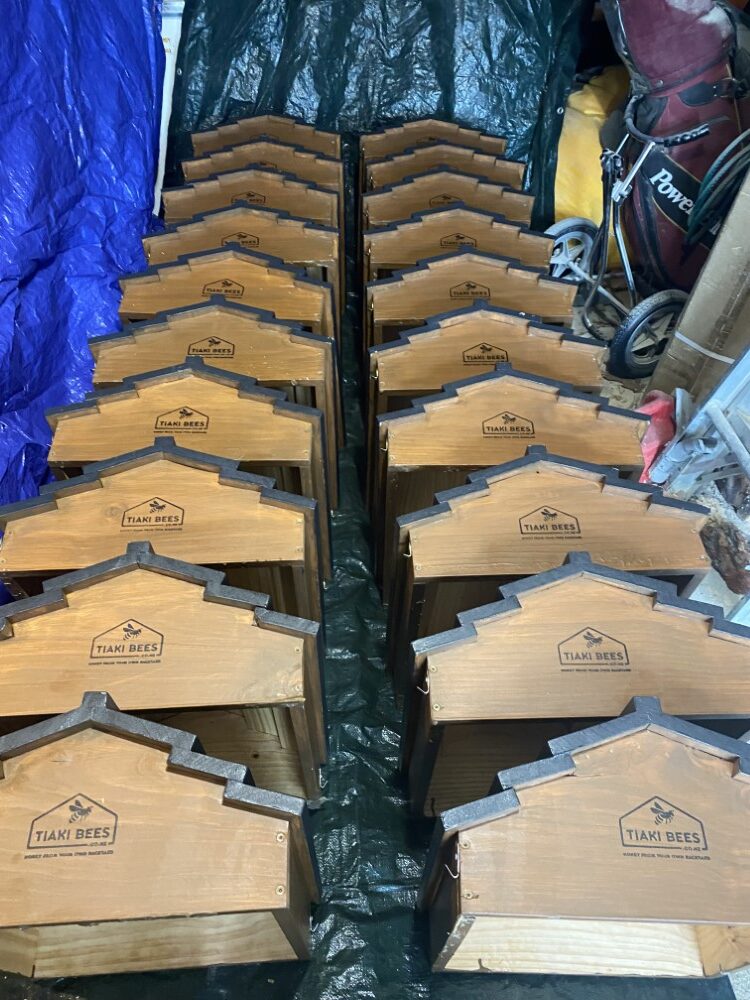
ur team is also busy balancing out the bee numbers, taking from stronger hives and adding to smaller hives to keep things in check. And, now that your bees are making honey, our next big task is making sure there’s somewhere for all this liquid gold to go. Now’s about the time you might notice your hive getting a little taller, as we install boxes called honey supers, stacking them on top of each hive.
The honey supers are where honey for human consumption is stored, which means there’s no contamination in the form of disease treatment or sugar syrup feed. Nope, in here it’s strictly pure, natural and raw honey made by the bees this season.
A quick note on the honey supers: the number that you’ve got stacked up is not necessarily indicative of a more healthy hive, so if your neighbour’s hive appears to be piling up boxes and yours is not, don’t fret. There are plenty of reasons we might add extra boxes on there. It’s a beekeeping thing, and more often than not, is just to make our job a little easier or to disturb the bees less.
If you ask us, bees are endlessly fascinating creatures, and the transformation of their life cycle at this time of year is yet another display of this. We spoke in our last blog about how in winter, the queen produces different bees, ones who live longer and don’t do a whole lot. But with hive activity reinstated in spring, their regular life cycle is back, and it’s a pretty incredible phenomenon. These little guys know how to pack a lot into their six weeks of life.
Generally, the first three weeks of a bee’s life are spent inside the hive, cleaning and nursing the larvae, before moving slowly into honey production. They eventually head towards the exit of the hive, becoming guard bees. Think of these as the nightclub bouncers of the hive, checking for the smell of the queen’s pheromones to make sure all bees coming in are those who belong.
For the last three weeks of their lives, bees tend to go out foraging – for water, nectar and pollen. And, the fascinating thing is that though most bees will cycle through all of these roles, some stick to just one or two. As with us humans, you’ll get generalists and specialists. Everybody has their role, and that’s what makes the whole thing work.
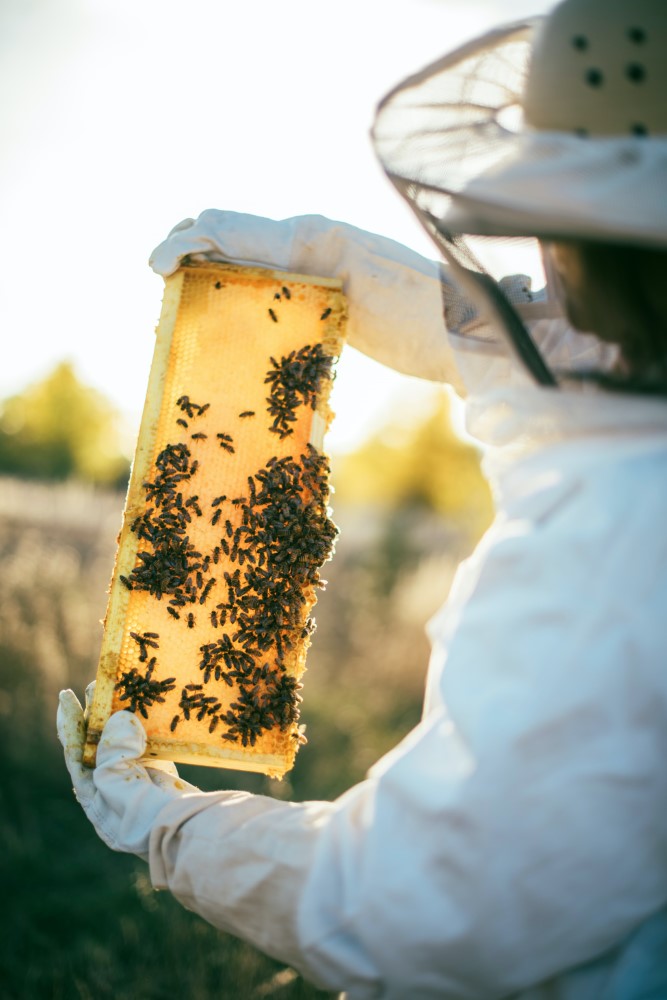
At Tiaki Bees, we can’t get enough of these little insects, and we love to share their magic around. We provide and maintain hives for even the smallest backyards, and it’s always a good time to get yours started. If you’re interested, give Barna a buzz on +64 21 090 75375 / 0800 LOVE BEES.
